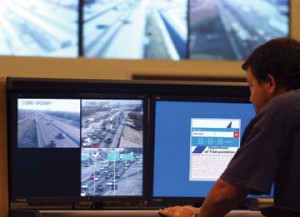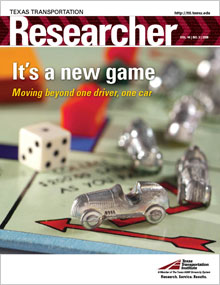Interagency cooperation through integrated corridor management

Transportation agencies do an outstanding job of operating their transportation networks with limited staff and fiscal constraints, but we still have congestion. Ideally, every agency in a region would have tools to allow collaboration in operating the entire transportation system for the greater good.
With the help of the U.S. Department of Transportation (U.S. DOT), three U.S. cites are trying to improve the way we manage congestion. Working together locally, these cities want to give their agencies information on how improved operating strategies will benefit the traveling public and empower travelers through better information and more choices.
Dallas, Texas; San Diego, California; and Minneapolis, Minnesota, are partnering with the U.S. DOT for stage two of its integrated corridor management program (ICM). The multi-year project promises to reduce travel times, delays, fuel consumption and emissions, as well as increase the reliability and predictability of travel.
The Texas Transportation Institute (TTI) is a team member on the Dallas project leading the analysis, modeling and simulation stage of the project. Joined by Southern Methodist University (SMU), Telvent Farradyne and the University of Texas at Arlington (UTA), the evaluation team will support the U.S. DOT in assessing the benefits that can be achieved by a more collaborative approach to corridor management.
The Dallas project will focus on the US 75 corridor from Dallas to Plano, Texas. ICM is a comprehensive team approach to battling congestion by coordinating within a corridor. It’s designed to synchronize various operations programs to help maximize the capacity of all facilities and modes. More specifically, the project focuses on tying together various congestion-fighting tools, such as traffic incident management, traffic signal timing, managed high-occupancy vehicle (HOV) lanes, real-time traveler information and mode shift to light-rail transit.

The U.S. DOT has recognized that congestion is made worse by not having the tools and strategies to foster institutional collaboration and coordination. The resulting lack of integrated operational strategies and procedures can result in reduced mobility.
Stage one of ICM included eight cities that developed individual operational plans. Now, in stage two, those plans will be analyzed to create a corridor model to analyze and simulate various strategies. This effort will measure the anticipated benefits of deploying ICM strategies in a corridor. The cities with the greatest potential to demonstrate the ICM concept will be invited to the final stage. In stage three, the U.S. DOT will select up to three demonstration sites to deploy the most beneficial strategies and to serve as model corridors to the rest of the nation.
Once ICM demonstrations are completed in 2010, a region of the country will be able to match congestion solutions and tools developed during the ICM program to its individual circumstance.
“We are pleased to be picked for ICM’s stage two,” says Christopher Poe, assistant agency director at TTI. “The goal of our team is to develop a mesoscopic transportation model that can be used both to evaluate the benefits of ICM and as an operation tool designed to help predict future conditions with and without ICM strategies based on the current traffic situation. It’s never been done on this scale before.”
The mesoscopic model, named DIRECT (Dynamic Intermodal Routing Environment for Control and Telematics), is being developed by SMU.
In addition to the modeling and evaluation, TTI serves as a liaison between the stakeholders. The US 75 ICM team is led by Dallas Area Rapid Transit (DART) with strong support from the North Central Texas Council of Governments, North Texas Tollway Authority and Texas Department of Transportation in addition to the Texas cities of Dallas, Plano, Richardson and University Park, and the town of Highland Park.
Despite its own congestion challenges, the Dallas area is considered an innovator when it comes to addressing transportation concerns. As proof of that, Dallas proponents quickly point to numerous local projects:
- the 2005 completion of the $260 million Dallas High Five (a five-level stack interchange connecting I635 with Central Expressway),
- this year’s completion of a 54,000–square-foot DalTrans facility (which expands the capabilities of DalTrans and becomes the central traffic operations center for all highway management and intelligent transportation system integration),
- this year’s doubling of the region’s HOV lane system,
- the construction of the region’s first managed HOV lane project on I-30 between Fort Worth and Dallas,
- the continuous expansion of the light-rail system and
- the first contraflow HOV facility in the world to use the Quickchange® Moveable Barrier (QMB) technology.
“Because we have a light-rail transit line parallel throughout the US 75 corridor, it allows us to showcase the ability to shift travelers to transit under the appropriate conditions in stage two,” says Koorosh Olyai, assistant vice president at DART and lead for the overall US 75 team. “Our transportation simulation model specializes in modeling the traveler’s choices of highway, street or transit. This modeling tool could be adapted in other corridors that also have, or will have, light rail.”
The U.S. DOT is also developing the necessary tools for knowledge and technology transfer to other cities around the country interested in implementing the ICM program. Webinars with more information about each stage will be available throughout the ICM program.
